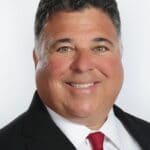
Anthony Maffeo
COVID-19 hit our economy like a freight train. Overnight, the landscape changed from one of optimism and strong economic indicators to a widespread shutdown economy where businesses struggled for survival.
Six months into this pandemic, there is still considerable uncertainty for businesses and institutions, including banks, as they eye budgets and try to make economic sense out of this new reality.
Most banks are well-positioned to survive this downturn; in many ways they are beacons of hope for businesses and individuals who have turned to them for funding through these challenging times. But a challenge they face now is dealing with employees, many of whom have had their worlds turned upside down in this “new normal.” Many banks, in following state and local guidelines and to protect customers and employees, closed their branches to the public except by appointment, often having a minimal staff on site and a large number of associates working remotely.
The Challenge of a ‘New Normal’
As the industry steps toward re-opening for in-person transactions, most bankers recognize that they will likely adopt a hybrid model, with many employees following a mixture of remote working and a rotating in-person workforce. Vaccines and therapeutics may return us to “business as usual” sooner rather than later, but for the short term we face a different reality, and with it, the anxiety among employees about returning to work and what that work landscape will look like. Is it safe?
Now more than ever is the time for the industry to accomplish two goals: keep the bottom line healthy and create an environment that is appealing for workers, some of whom may need to be “coaxed” back into the in-person office model.
As COVID-19 has caused angst over returning to the workplace, and as employers grapple with how to tackle that delicate problem, the issue of incentivizing returning employees may well come center stage. With it will be the subject of benefits, a key part of any conversation about recruiting and retaining talent.
One helpful strategy in the goals of cost control and employee recruitment and retention is to incorporate a participating funding arrangement, or PFA. It’s a strategy of lowering the cost of healthcare benefits significantly, with tangible results for employees and relatively low risk for the employer. It additionally affords great flexibility and plan design. Think of it as “pay as you go but do not overpay.”
The PFA model works differently than an health reimbursement arrangement (HRA) or health savings account in that in the PFA all employees are participants in the plan. In doing the liability calculation, in an HRA it’s all employer responsibility. What the PFA does differently is an additional monthly calculation for the exposure which is added to the basic plan. All members are participants and employees have “skin in the game.”
At the end of the year, if there is $30,000 left over, the employees can get a refund. Both the institution and the employees build up a piggybank. If there is a bad year for claims, it’s possible to take some of the savings to offset a higher renewal. The liability is averaged over an entire population. Some call it “the purest form of insurance” because an employer only funds the account when absolutely necessary.
Tried and True
When private companies in the past have faced rising costs, they have historically changed the premium split which results in an employee paying more. Or they raise the deductible and the benefit is worse. But most job seekers are more interested in healthcare benefits even than salary.
Under a PFA, the institution buys the least expensive plan from carriers like Blue Cross Blue Shield, Tufts or Harvard, then self-funds the difference to create a custom–designed plan. In most cases, there can be up to three plans on one menu. The difference is paid by the PFA, funded by a payroll deduction and set aside in a “pot of money” to pay for claims.
It has worked well in the private sector for over 20 years. Three years ago, this PFA plan was implemented by the town of North Reading, where feedback from employees has been tremendously positive. This plan saved the municipality nearly $1.5 million in healthcare costs over three years – a great illustration of how this can help institutions and municipalities control costs.
The issue of saving costs on benefits looms large. An examination of this strategy may be just the ticket to keeping costs low and providing real benefits to the institution’s top talent.
Anthony Maffeo is CEO of Integrated Benefits Group, a benefits provider for financial institutions and other industries, based in Stoneham.




 |
| 

